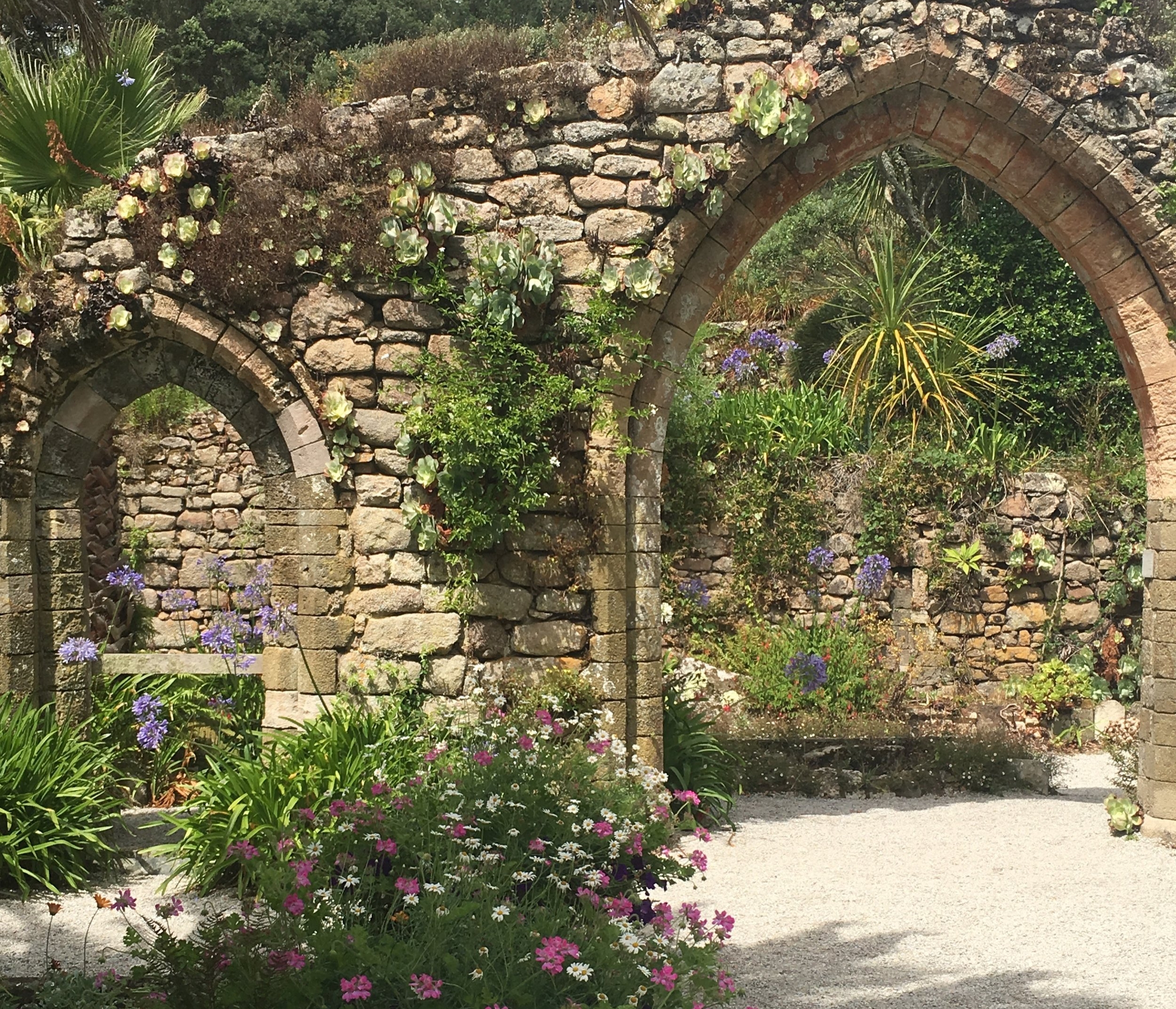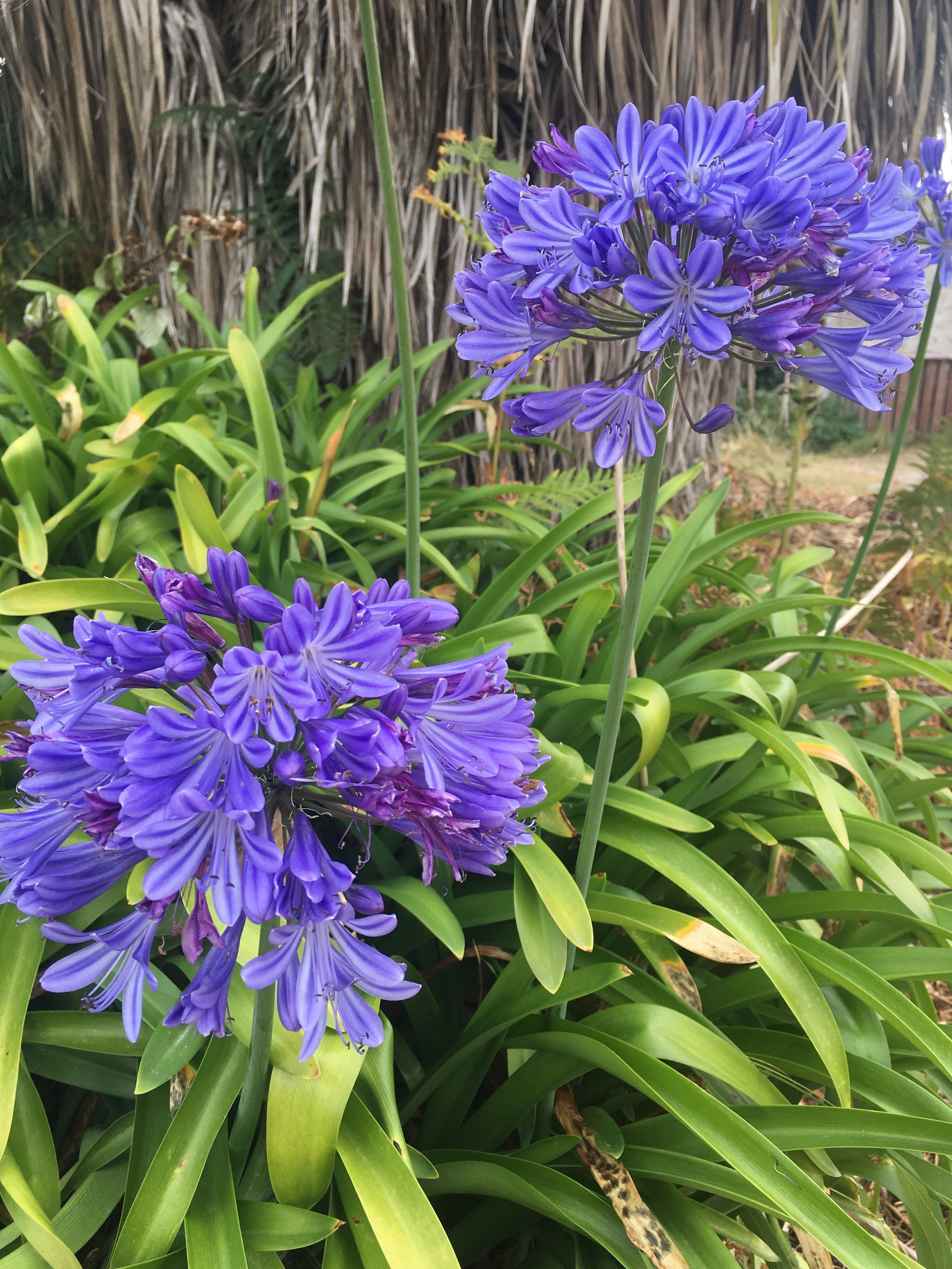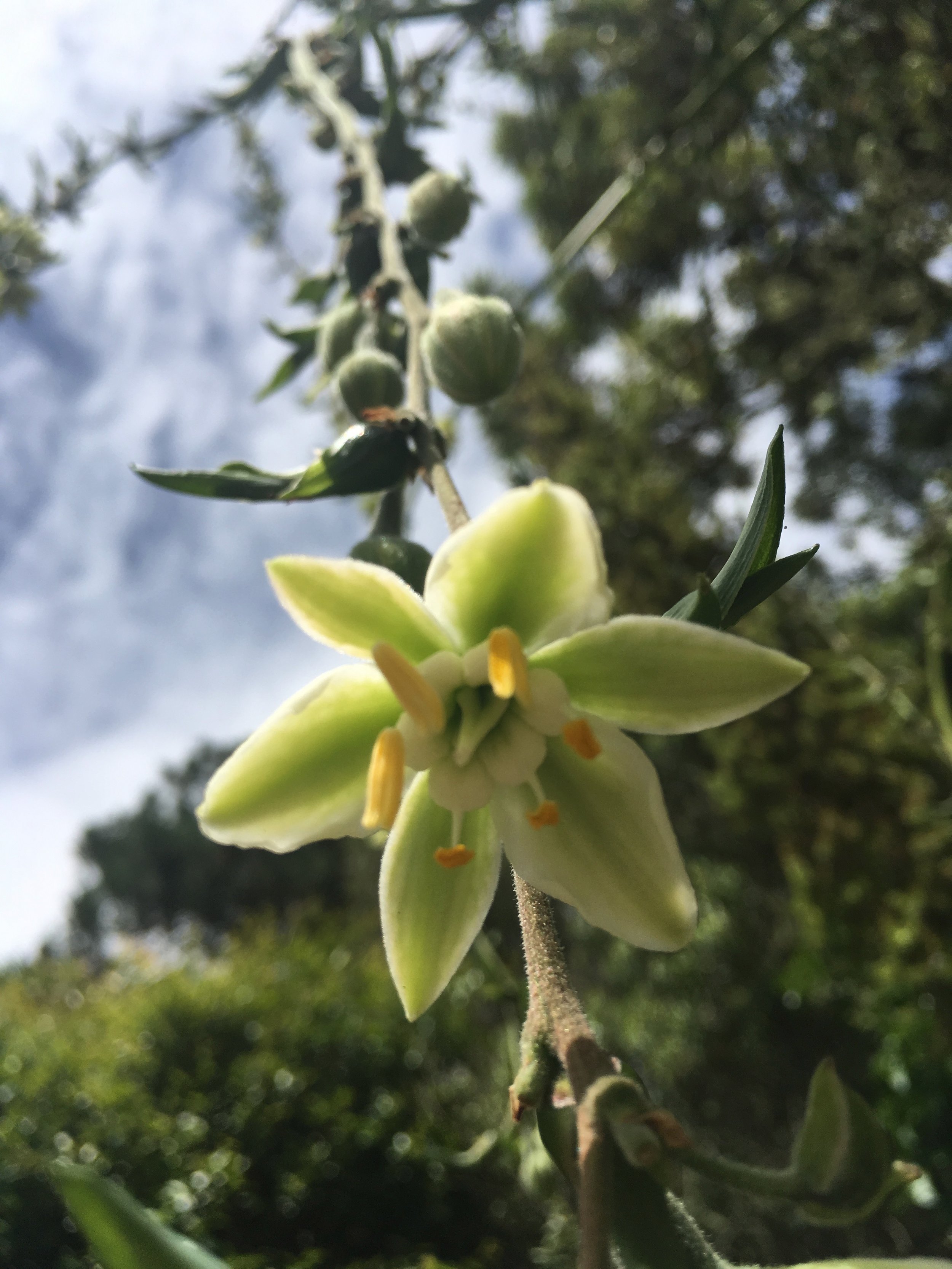Recently, I was lucky enough to go and stay on the Isles of Scilly – a beautiful archipelago of islands off the coast of Cornwall. For a plant lover it is a fascinating place to visit because, despite being part of the UK and its relative proximity to the mainland, the islands have a sub-tropical climate and play host to a range of plants that would have no chance of surviving on the mainland. Never was the phrase ‘Right Plant, Right Place’ more apt.
The famous Tresco Abbey Gardens, established in the 19th century by the pioneering Augustus Smith, has over 2000 specimens of plants from around the world, in particular South Africa, South America, the Mediterranean and Australasia. But the exotic plants are in no way restricted to the gardens themselves. All over the island of Tresco, there is a glorious array of palm trees, candle-like Echiums, statuesque Agaves and many many succulents (Echeveria, Aeonium to name only two) which creep up walls, over stones, and into crevices – growing naturally in and amongst the gorgeous Agapanthus. But the stunner that really caught my eye this summer was a plant I had never ever seen before.
Popping up all over the island were these incredible statue-like spindly forms. Rather like a Yucca they had a rosette of blades at their base, but then from the centre there rose up about 4-5 metres this single mast with multiple arms coming off it, and little pretty cream flowers dangling off every arm – just like baubles on a Christmas tree. Stunningly pretty and an incredible structural form. Intrigued, I tracked down one of the highly knowledgeable garden staff who work on the island and discovered this beauty’s name. It was a Mexican plant called a Furcraea longaeva– a succulent from the Asparagaceae family. The Furcraea send up this stunning mast-like feature and flower only one in their lifetime and it seems that they have to go through a period of stress to induce them to do this. The cold snap we had this winter even managed to reach Scilly’s shores and the gardener I spoke to was convinced that this had put the plants under enough stress to make them perform this incredible display in the summer – she said she has only seen it happen every 6-7 years. I felt very lucky to have been there to witness them put on this show. Let’s hope I may see it again in another 6-7 years!! Keep an eye out for them if you ever go to the Scillies – they are a rare beauty indeed.





